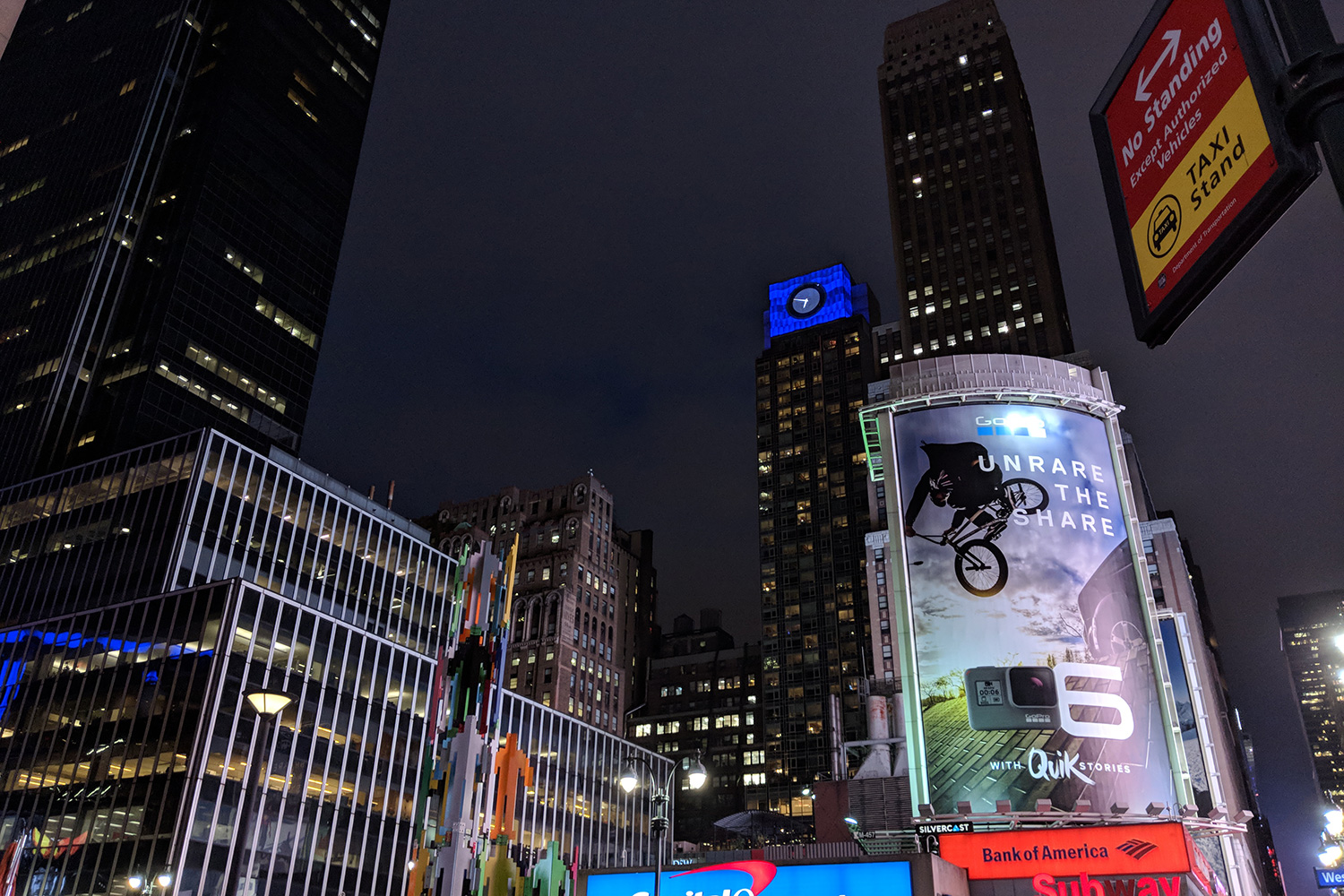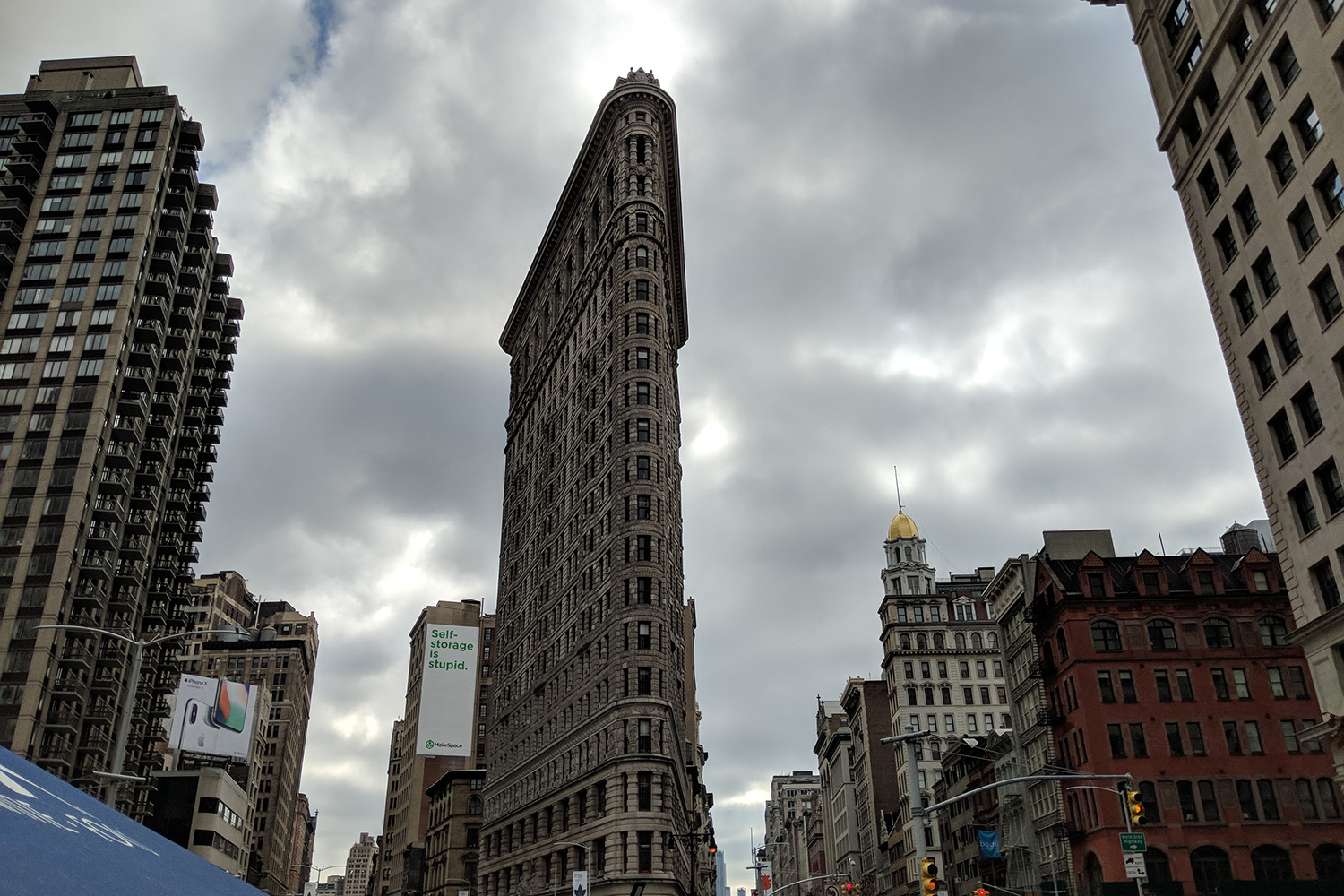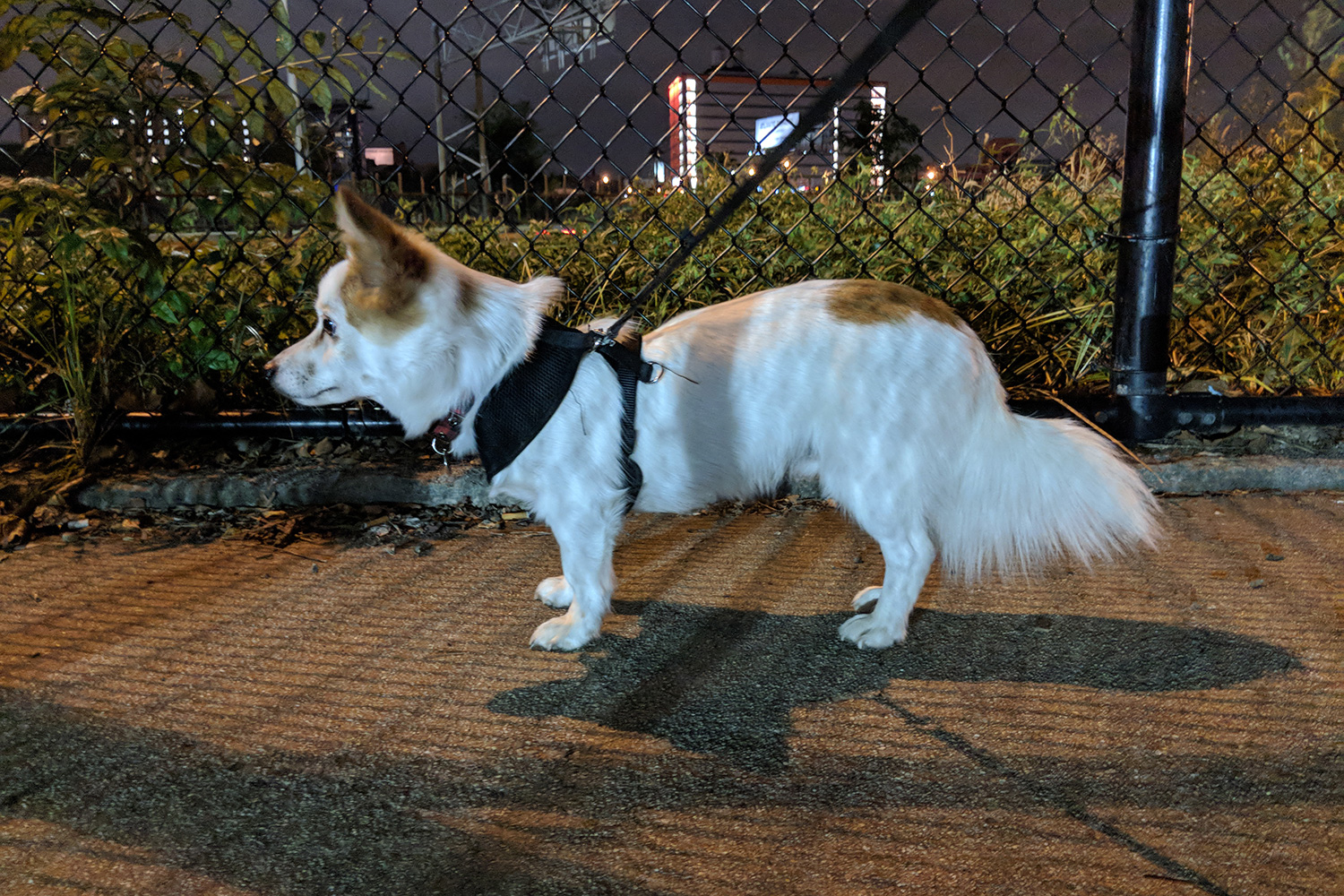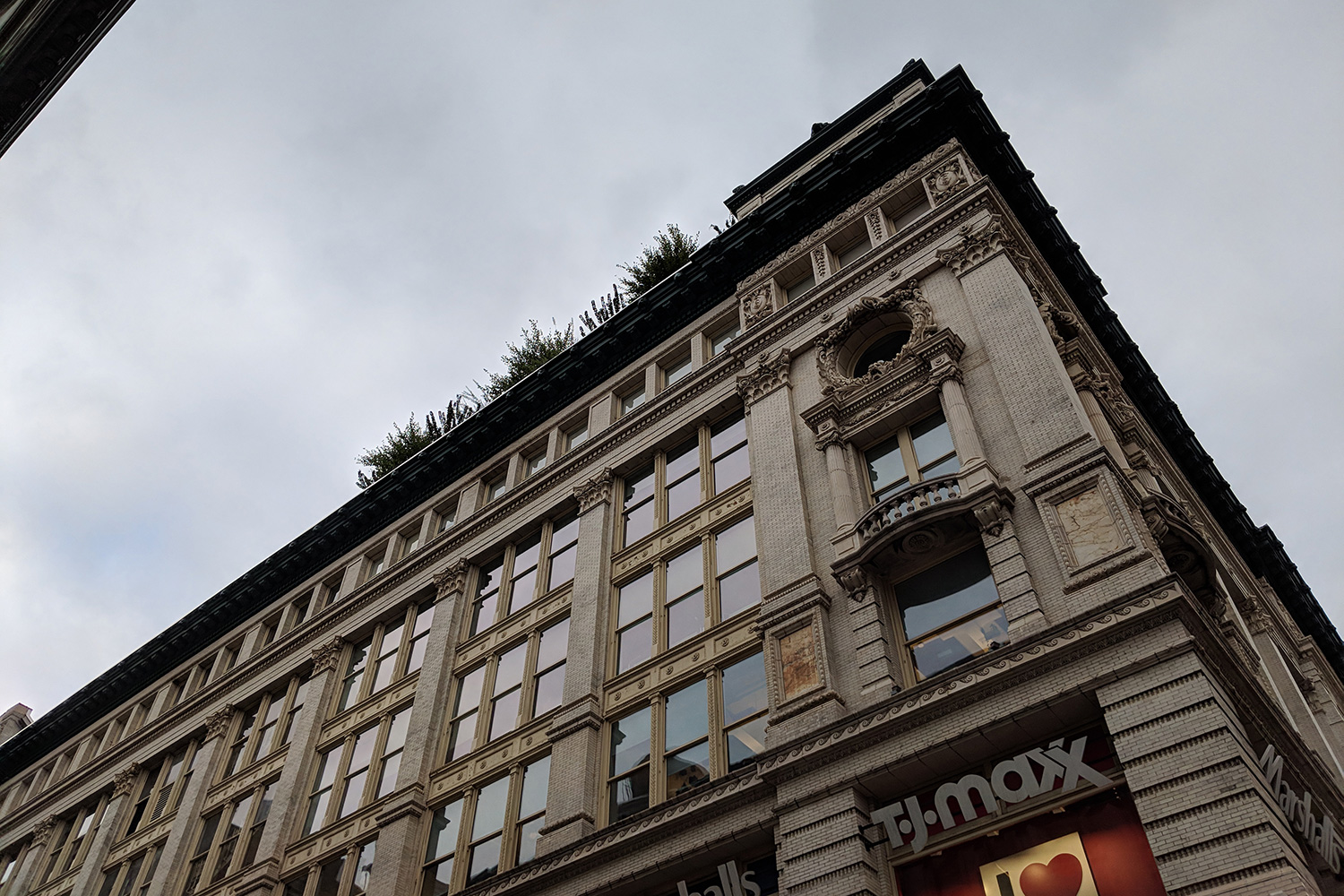“Blazing-fast speed and a brilliant camera, all in a futuristic, edge-to-edge design. The Pixel 2 XL is the best Android phone around.”
- Gorgeous design
- Blazing fast performance
- Brilliantly reliable camera
- Excellent software experience, fast updates
- IP67 water-resistant
- No headphone jack
- Display has blue tint when viewed from sides
Google has done it again. Despite impressive competition this year, the Pixel 2 XL is the best Android smartphone in the world. Now before you start jumping at its faults (the lack of a headphone jack; the edges around the screen; or the missing MicroSD slot when the competing Galaxy Note 8 and LG V30 both have one) we’ll admit, the Pixel doesn’t have the best hardware. Google is a software company at heart — and as we explore in our review, that’s where the Pixel 2 XL shines.
Note: There have been some complaints about the Pixel 2 XL’s screen, which we explore in this opinion article. Google has also addressed the issue, and has extended the warranty to two years for customer peace of mind. We still stand by our score and recommendation.
A 6-inch window to a blissful Android world
The Pixel smartphone line began last year as Google abandoned the Nexus brand, signaling its intention to exercise more control over hardware. What used to be a collaboration with a manufacturer is now a phone designed completely by Google.
There was never a singular, iconic look to Nexus phones. The Motorola-made Nexus 6, for example, aped the look of other Motorola phones. That’s not the case with the Pixel 2 XL, which carries forward the design of last year’s Pixel XL. It’s becoming easier to distinguish a Pixel in a market flooded with lookalikes. That’s important if Google wants the average person to remember what it’s trying to sell.
What’s nice is it doesn’t look like your average smartphone, thanks to the two-tone glass and aluminum rear design. A quarter of the phone top on the rear is glass, while the rest is metal. This year’s Pixel 2 XL is slightly different, with a bigger camera that sadly sticks out a tad, and the glass stops before the fingerprint sensor. Gone are ugly antenna lines, now masked in glass. It looks a lot more refined and mature than last year’s Pixel XL, in part because Google has left the edges more angular, rather than rounding them off.
We really love the Pixel 2 XL’s design, and we liked last year’s model as well, but this is subjective. We’ve already heard “ugly” thrown around the office, and some friends just aren’t sold on the design. The metal on the back, which has a unique matte texture, is particularly polarizing. It’s almost like a smooth chalkboard. We think it feels nice to the touch, but hold an iPhone 8 Plus or a Galaxy Note 8 and you’ll feel as though the Pixel 2 XL isn’t made of similar, high-quality materials. The Pixel is far lighter, and the all-glass design on Apple and Samsung’s phones screams premium.
Flip the phone over, and you’ll find what makes the Pixel 2 XL the better phone to buy over the regular Pixel 2: A large, display with small bezels. It’s the smartphone design trend of the year, and any phone that doesn’t minimize the edges around the screen easily looks dated against the likes of the Galaxy S8, the LG V30, the iPhone X, and the Essential Phone.
That said, the Pixel 2 XL’s bezels aren’t as slim as that crowd’s, and the sides don’t blend the display into the rear like the Note 8. Still, you get something close, and we like how the screen’s edges are rounded, like the LG G6. It looks like a 6-inch window into pure Android bliss.
It’s becoming easy to distinguish a Pixel phone.
The Pixel 2 XL benefits from a bold pOLED screen, with a high 2,880 × 1,440 pixel resolution. With 538 pixels per inch, this screen looks sharp, and colors just pop off the screen. The screen isn’t oversaturated, and it’s not as colorful as a Samsung display, but we didn’t think it is an issue. When compared to an iPhone 8 Plus, the color temp is cooler, and blacks look far darker. The screen gets bright enough to view outside, but just barely.
There is one problem we’ve noticed with the screen — tilt it to the side and you will now see a bluish tint. It happens whichever way you tilt the phone, and it’s a little odd to see such an issue in an expensive device. We personally don’t think it’s a deal breaker, but it is something to be aware of when purchasing. Other reviewers and device owners have noted other issues with the screen as well, but it’s still anything short of a usability problem and we haven’t been able to replicate some of the problems. Google has addressed these issues and said it’s confident the screen is fine, but it’s still extending the phone’s warranty and a software update will help mitigate screen burn-in and add a Saturation Mode for those who want more vivid colors.
Google opted for an 18:9 aspect ratio instead of the traditional 16:9. Most Android apps are designed to scale, but you will run into issues where some apps look a little strange, almost like they’re cut off at the top and bottom because they do not scale. We’ve only seen this with a handful of games, but strangely Google does not offer an option to force an app to scale, as LG and Samsung do.
While last year’s Pixel phones had an ambient display that would flash in and out when there was a new notification, the Pixel 2 XL has an always-on display similar to the V30 and the S8. It always shows the time, date, whether the phone is charging, and notification icons. Double tap the screen to wake the display, or double tap a notification to go right into the app.
The reason to buy the Pixel 2 XL over the 5-inch Pixel 2 is the display. It looks great, especially with a wallpaper from Google’s Living Universe collection, which add eye-catching movements to the screen like waves crashing onto a beach. The minimal edges around the screen really do improve the overall design of the phone, making everything feel far more immersive.
Goodbye headphone jack
There’s only one port on the Pixel 2 XL: USB Type-C. After poking fun at Apple’s controversial decision to remove the headphone jack from the iPhone 7 Plus last year, Google has followed suit. It’s a dealbreaker for a lot of people, understandably. Removing the 3.5-mm headphone jack forces Pixel owners to use a dongle they may likely lose, or shell out for wireless buds, which are often pricier than wired ones.
The only silver lining comes in the form of dual front-facing stereo speakers. No longer do your fingers block the sound from the bottom-firing speakers. They easily get loud, and sound well balanced. Unlike the Huawei Mate 10 Pro, there’s thankfully Bluetooth 5 on board. That should bring better range, less interference, and lower battery consumption for wireless headphones.
Speedy performance
Last year’s Pixel smartphone had an edge over the competition. It was the first to feature Qualcomm’s Snapdragon 821 processor, which was a tad better than the Snapdragon 820 found on many 2016 flagships. Despite rumors suggesting the Pixel 2 XL would use a new Snapdragon 836 chip, it’s powered by the same Snapdragon 835 that’s in the likes of the Galaxy S8, leveling the playing field.
But there’s still an edge the Pixel has over the Android competition. As Google designed the hardware and software, it’s able to optimize the operating system closely — far more than most manufacturers. It also helps that Google’s software is pure, bloatware-free Android. As such, performance is blazing fast and we’ve yet to run into any issues. Launching apps and moving through the OS is fluid and fast, and games such as Lego Star Wars: The Force Awakens, Transformers: Forged to Fight, and SUP performed without a hitch.
Take a look at the benchmark scores:
- AnTuTu: 111,112
- Geekbench 4: 1,179 single-core, 4,413 multi-core
- 3DMark Sling Shot Extreme: 2,318
Our Pixel 2 XL scores were surprisingly lower than many other Snapdragon 835 devices. Samsung’s Galaxy Note 8, which has the same processor, got an AnTuTu score of 167,946, and the LG V30 scored a 171,669. Unsurprisingly, the iPhone still reigns king with the A11 Bionic processor and an unrivaled score of 222,462. Benchmarks scores aren’t the be-all end-all of performance, and all these devices offer plenty of horsepower. We’ve been blown away by the Pixel 2 XL’s speed, and it will likely be just as fast a year down the line like our 2016 Pixel XL.
The Pixel 2 XL comes with 4GB of RAM, and a choice of 64GB or 128GB of storage. There’s no MicroSD card slot, but you do get unlimited high-quality photo storage via Google Photos.
An elegantly simple Android 8.0 Oreo experience
The best part about Pixel smartphones is the software experience. Namely, you’ll get three years of version and security updates with the Pixel 2 XL. That’s important, as it keeps your device secure and brings you the latest features for a longer time than most Android phones.
Google’s version of Android is simple, uncluttered, elegant, and fluid. The home screen has been slightly refreshed over last year’s Pixel: The Google Search bar moves to the bottom of the screen, making it easier to access; and a neat new calendar widget shows you your next meeting and the weather. Swipe to the right and you’ll access the Google Feed, which sports a transparent background. Swipe down to access the notification drawer, which now adds a shade the color of your wallpaper.
Google’s version of Android is simple, uncluttered, elegant, and fluid.
Press and hold the power button, and you’ll see the Power Off and Restart options look a lot nicer, similar to the design of app shortcuts (the options that pop up when you long-press an app). The Settings menu has been condensed greatly, largely thanks to Android 8.0 Oreo, which introduces a host of new features such as Notification Dots, Picture-in-Picture mode, and more. To learn more, read our in-depth Android 8.0 Oreo review.
Google Assistant is mostly unchanged, but Google has taken a page out of HTC’s book with a feature called Active Edge. Like Edge Sense on the HTC U11, you can squeeze the edges of the phone to trigger an action. It works really well, but it’s tough remembering it’s a feature we can use. It’s handy when you’re out in public, your hands are full, and you don’t want to say “OK Google” out loud. Still, we would have liked the option to customize the trigger to do something else, like open an app. This is possible on the HTC U11, but it looks like Google wants to keep it strictly for Assistant, like Samsung forcing people to use its Bixby button for the Bixby assistant.
One of our favorite additions is Now Playing. It’s a rather simple feature that detects what song is playing in the background and it will add the name and artist to the Always-on Display. Don’t worry, Google isn’t listening to what you’re saying 24/7 — the phone looks up the audio fingerprint of the song in a database that “lives on the phone.” The database is updated with new music each week, and if it’s there the Pixel 2 XL can tell you what song’s playing. It all happens offline, on the device. You can tap on the song name and Assistant will open it, and allow you to view it in your music app of choice.
It generally picked up pop songs within 10 to 20 seconds of entering a restaurant or store. It took about a minute for songs a little more obscure, and sometimes it just couldn’t identify it. Google Assistant, though, can finally identify what’s playing.
“Now Playing isn’t intended to be an “on-demand” music recognizer,” a Google spokesperson told Digital Trends. “Instead, we mean for Now Playing to be glanceable and ambient. Assistant Sound Search (asking “what’s this song?”) will offer on-demand song recognition.”
The recognizer runs once per minute when continuous music is playing to conserve power, and we didn’t notice much of a dip. If you don’t like it or think it’s affecting battery life, you can turn it off.
All-in-all the software experience is the bread and butter of the Pixel phone, and Google nails it yet again.
The best camera on a smartphone
There could not be a better example of Google’s software strengths over hardware than the camera on the Pixel 2 XL. While nearly every other manufacturer has gone with a dual-camera setup on their smartphones, Google boldly said it just needs a one.
What blew us away, though, is Portrait Mode — specifically on the selfie camera.
Last year’s Pixel quickly got a reputation for having an excellent camera. While we thought so too, and said it was often better than the iPhone 7 Plus at the time, one of our complaints was how it tended to oversaturate images. That’s not a problem with the 12-megapixel camera on the Pixel 2 XL.
Colors are impressively accurate, images are always brilliantly detailed, and best of all the camera app is incredibly fast and simple to use. There’s virtually zero shutter lag.
The Pixel 2 XL’s image processing can do some wonders in taking out or minimizing grain in low-light photos as well. The always-on HDR+ makes sure photos are never overexposed or underexposed in certain areas — and if they are, a brightness slider usually lets you correct the look. Occasionally, photos can look like someone cranked the clarity a little too high, but the images are always something we’re still likely to share.
What blew us away, though, is Portrait Mode — specifically on the 8-megapixel selfie camera. Portrait Mode is now a feature on many dual-camera phones, as the data from both cams help create a DSLR-like blur (or bokeh) around a subject. Google had a version before called Lens Blur, but it required you to raise the camera up after snapping a shot so it could capture depth data. It’s now much simpler: Just tap the shutter icon.

Google uses software to determine depth. The results are most often accurate, and images are processed much faster than last year’s Lens Blur on the Pixel. Sure, there’s the odd photo or two where the blur wasn’t quite right, but we’re genuinely impressed with them when it works. It frequently manages to do a great job of correctly picking out even small strands of hair that should not be blurred out (with exceptions, of course). Take a look at the comparison between the iPhone 8 Plus Portrait Mode vs. the Google Pixel 2 XL’s Portrait Mode. The iPhone 8 Plus has stronger bokeh and a brighter picture, but the hair strangely has a slight blur. The Pixel photo is a littler darker with weaker blur, but you can see strands of hair that are in focus.
That being said, it would be great if we could adjust the level of blur — like Samsung offers with the Note 8. It does feel at times too little, and we’d like to make it more noticeable like the iPhone’s.
Two other smartphone photography tricks Google has added are more gimmicky than useful. Motion Photos mimics Apple’s Live Photos — tap on the shutter icon and the phone will take 3 seconds of video. Google’s software picks the best place to start and stop the video, and then loops it. It’d be nice to see some iOS 11 effects here, like Long Exposure and Bounce.
- 1. iPhone 8 Portrait Mode
- 2. Pixel 2 Portrait Mode
The other is Google Lens, which is still in a preview program. When you activate it on a photo in your library, Google will try to detect what’s in the image. It’s not terribly useful right now as it’s limited to what it can detect. We tried to get it to detect crab rangoon, but it just ran an image search for “food.” Google told Digital Trends Google Lens works best right now with detecting landmarks, books, artwork, movie posters, album covers, video games; and you can “take action on text,” like email addresses, phone numbers, addresses and URLs. We think the latter feature is the most useful at the moment, and you can use it to scan barcodes and QR codes. Google said more options will be added over time.
The best part of the Pixel’s camera is that it just works reliably 99 percent of the time, and it does a bang-up job in most lighting environments. Portrait Mode is our favorite feature, and you’ll fall in love with it if you frequently take selfies. The only other phone that will let you take Portrait Mode selfies is the unreleased iPhone X.
Nearly a day’s worth of battery
Battery life is perhaps one of the more disappointing areas for the Pixel 2 XL. It’s not awful, but with heavy usage we hit 20 percent by 8 p.m, after pulling it off the charger around 8 a.m. That’s with streaming music, web browsing, using social media, watching YouTube videos, taking photos, and more.
We’ve certainly seen better battery life in other smartphones
On a lighter day of mostly browsing the web and taking a few photos, we hit about 45 percent by 9 p.m. We’ve certainly seen better battery life in other smartphones such as the LG V30. Like most flagship devices, you’ll still need to charge your phone every day, but the Pixel 2 XL did make us feel anxious whenever we didn’t have a charging cable on hand as a precaution.
At idle, the Pixel 2 XL only lost a little under 10 percent after leaving it on for most of a day. And when you need a boost, it charges up incredibly fast with the included charger. We watched it shoot from 39 percent to 79 percent in only 40 minutes.
Price, availability, and warranty
The Google Pixel 2 XL costs $850 for 64GB of storage or $950 for 128GB. It’s available on the Google Store, though some models may be out of stock. It’s also being sold via Best Buy, and the only carrier selling it is Verizon. Beware the “exclusively on Verizon” signs though, as purchasing the phone from Google means it will work on any major U.S. carrier.
Google initially offered a standard one-year warranty, but after the blowback and concerns about the Pixel 2 XL’s screen, it is now providing a two-year warranty that protects the device from manufacturing defects two years from the date of purchase. If you’re paranoid, you can add Preferred Care for $130 extra, and it gives you “worry-free protection for your phone for two years,” including two claims for accidental damage. It also adds access to walk-in centers for screen repairs, priority access to specially-trained agents 24/7, and unlimited expert sessions to learn tips to use the phone.
Our Take
Blazing-fast speed, a brilliant camera, an uncluttered and beautiful Android experience, all in a futuristic, edge-to-edge design. A headphone jack would have been icing on the cake, but this is still the Android cake to own.
Is there a better alternative?
Yes, the iPhone 8 Plus is a great alternative that matches the Pixel 2 XL on a lot of fronts. It has a great camera, a buttery smooth software experience, and the fastest mobile processor around. If you don’t have a preference towards an operating system, the iPhone 8 Plus is worth a look — though you may also want to glance at the upcoming iPhone X.
If you want to stick to Android, we think the Samsung Galaxy Note 8 is a stellar option. It has dual optical image stabilization on its cameras, a better screen, and it can take excellent photos as well. It’s a little pricier at $930.
The LG V30 is a nice middle ground, costing around $800, and it has a headphone jack, as well as a fun wide-angle camera if you want something unique.
How long will it last?
The Google Pixel 2 XL is finally IP67 water-resistant, which means you can take it underwater up to 1.5 meters for 30 minutes. This helps with durability, but there’s not much stopping the phone from shattering if you drop it, unless you grab a case. The Pixel smartphones receive software updates instantly from Google, and the Pixel 2 XL should get them for three years. Expect this device to last four to five years.
Should you buy it?
Absolutely. If you don’t care much for the missing headphone jack, the Pixel 2 XL is the best Android phone around.























